NOTES
Monday, July 2, 2007
Blog 3 7/2/07
0713-0813
Clear blue skies, still, quiet
Bird List in order of arrival:
➢ mrgo (chases mwbb successfully—cheep/cheep/cheep/cheep/cheep)
➢ mwbb
➢ mbobl (chooses seed over peanuts)
➢ unbanded shopper (chases mrgw successfully)
➢ mbrg
➢ pbmp
➢ mblow
➢ mwrg
➢ unbanded juvenile comes with mrgo
➢ mrgw (drinks water)
➢ unbanded adult
➢ unbanded right shoulder tuft
➢ mgrr
➢ mwblw
➢ morb*
➢ banded juvie
➢ mpblw*
* new birds to the feeder
Droopy arrives at 0812, looks around cautiously, lands near a pile of seed and picks out the very smallest bits of millet, storing them in her bill. She crouches nearly parallel to the ground, tucks her crest back, maintaining a veritable low profile, grabs one peanut and flies up to the roof. Her lift-off looks labored and awkward, as if she’s out of practice. She doesn’t return again during this note-taking period.
The birds are quiet except for mrgo, who emits a shrill “cheep” now and then vocalized as one, three, four or five “cheeps”--the final syllable always emphasized. I also hear him in a soft conversation with mbobl, his mate, when they are near each other, perched in the crabapple tree. I have yet to identify a way to characterize these conversations in terms of their sound; however, they seem to take place when the juvies are around and have an informal, chatty tone that indicates a kind of intimacy between the two. In the distance, now and then, I hear a “chooka, chooka, chooka, chooka, chook” that I think occurs most frequently during flight and just before a landing. My sense is that the call comes in vocalized groupings of 3, 5, and 9. Sometimes the chooka and cheep are combined in a “chooka, chooka, cheep, cheep.” Finally, Mr. Go has a different kind of cheep—low, rather than shrill, that he utters while perched in one spot, fluttering his wings up and down, in what looks like a begging posture.
I’ve read recently that the jays are quieter during nesting, brooding season and this seems to be the case here. The loud, raucous, continuous shouting match between jays is not occurring now. The still quiet in the morning is distinct.
Total Number of Birds: 17
Babies are messy eaters no matter what species. These baby birds dip down into seed piles, and unlike their parents, who precisely pick out seeds without disturbing the pile, come back, head up, with seeds flying everywhere--seeds clinging to their gape and seeds falling out of the sides of their mouths like rain. It is a spectacle that inspires a giggle even when I’m sitting in a room alone with no one to enjoy it with me.
Two new birds to the feeder came today: mp/blw and morb. I have no previous recollection of these birds. They both flew in very quickly, grabbed one peanut and left—not taking the time to shop, they swooped in and out again.
0713-0813
Clear blue skies, still, quiet
Bird List in order of arrival:
➢ mrgo (chases mwbb successfully—cheep/cheep/cheep/cheep/cheep)
➢ mwbb
➢ mbobl (chooses seed over peanuts)
➢ unbanded shopper (chases mrgw successfully)
➢ mbrg
➢ pbmp
➢ mblow
➢ mwrg
➢ unbanded juvenile comes with mrgo
➢ mrgw (drinks water)
➢ unbanded adult
➢ unbanded right shoulder tuft
➢ mgrr
➢ mwblw
➢ morb*
➢ banded juvie
➢ mpblw*
* new birds to the feeder
Droopy arrives at 0812, looks around cautiously, lands near a pile of seed and picks out the very smallest bits of millet, storing them in her bill. She crouches nearly parallel to the ground, tucks her crest back, maintaining a veritable low profile, grabs one peanut and flies up to the roof. Her lift-off looks labored and awkward, as if she’s out of practice. She doesn’t return again during this note-taking period.
The birds are quiet except for mrgo, who emits a shrill “cheep” now and then vocalized as one, three, four or five “cheeps”--the final syllable always emphasized. I also hear him in a soft conversation with mbobl, his mate, when they are near each other, perched in the crabapple tree. I have yet to identify a way to characterize these conversations in terms of their sound; however, they seem to take place when the juvies are around and have an informal, chatty tone that indicates a kind of intimacy between the two. In the distance, now and then, I hear a “chooka, chooka, chooka, chooka, chook” that I think occurs most frequently during flight and just before a landing. My sense is that the call comes in vocalized groupings of 3, 5, and 9. Sometimes the chooka and cheep are combined in a “chooka, chooka, cheep, cheep.” Finally, Mr. Go has a different kind of cheep—low, rather than shrill, that he utters while perched in one spot, fluttering his wings up and down, in what looks like a begging posture.
I’ve read recently that the jays are quieter during nesting, brooding season and this seems to be the case here. The loud, raucous, continuous shouting match between jays is not occurring now. The still quiet in the morning is distinct.
Total Number of Birds: 17
Babies are messy eaters no matter what species. These baby birds dip down into seed piles, and unlike their parents, who precisely pick out seeds without disturbing the pile, come back, head up, with seeds flying everywhere--seeds clinging to their gape and seeds falling out of the sides of their mouths like rain. It is a spectacle that inspires a giggle even when I’m sitting in a room alone with no one to enjoy it with me.
Two new birds to the feeder came today: mp/blw and morb. I have no previous recollection of these birds. They both flew in very quickly, grabbed one peanut and left—not taking the time to shop, they swooped in and out again.
Subscribe to:
Post Comments (Atom)
Pia Sets the Trap
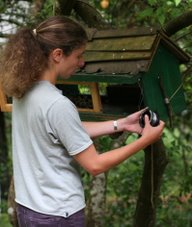
07/24/07
Peaking...
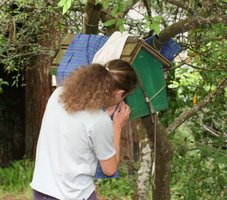
07/24/07
Oops, wrong bird!
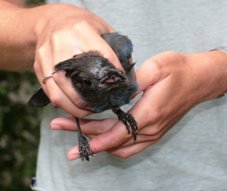
Demonstrating the "hold"
Try Again
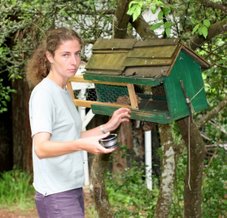
Bird in the Bag
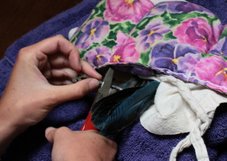
Applying a metal band
Measuring

and more measuring. . . .
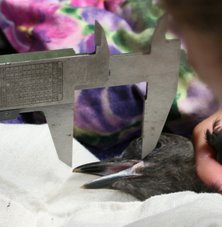
Blood Sampling
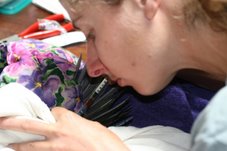
Jeff J's Work

Pia's test tube holder
Weighing
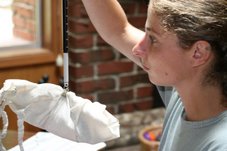
And then....release
When the sun goes down...
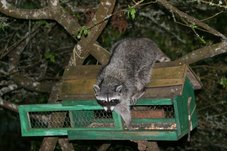
Steller's Jay Taxonomy/Description
Common Name: Steller's Jay
Class: Aves
Order: Passeriformes
Family: Corvidae
Genus: Cyanocitta
Species: Cyanocitta stelleri
Steller’s jay belongs to the family, Corvidae, in the Avian Order Passeriformes. Passeriformes is the order of perching birds. Corvidae is the jay, magpie and crow family. The Steller's jay's scientific name is Cyanocitta stelleri. The generic name, cyanocitta, means "blue jay". Its specific name, stelleri, named for George W. Steller (1709-1746). Steller was a German zoologist who explored the coastal areas of the northern Pacific Ocean in 1740.
Band Colors
black | white | purple | red | orangeBands are read in the following order:
light blue and light blue | green
Note: Light blue is difficult to read. It darkens with age, resembling a green band. (b/w/p/r/o/lb/g)
right bottom band
right top band
left bottom band
left top band
Data Collecting
This information was copied from the website of Dr. Jeff Black, Humboldt State University Wildlife Department.
The data to include for each record:
- Bird’s color code
- Size of social group seen at the same time
- Associates’ color codes (or if unbanded = UNB; or not determined = NOTD)
- Number of times associates came within 3 meters of each other
- Approximate time spent within 3 meter distance (e.g. 2 seconds, 15 sec, etc.)
- Total time you watched the birds (e.g. 5 minutes, 10 min, etc.)
- Time of day; start of observation (e.g. 1935)
- Date (e.g. 9.30.99)
- Location of observation (e.g. Rewood Bowl SW corner west bleachers. And state whether the bird was seen at a birdfeeder or in trees, etc)
- Comments (e.g. deformed leg, feather tuft on back, etc.)
Arcata Steller's Jay Sightings
Mr. Go
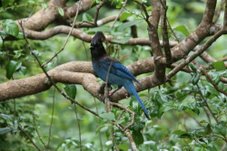
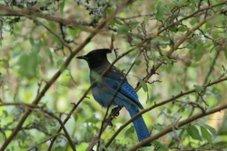
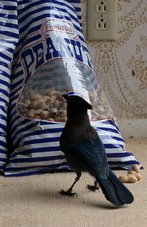
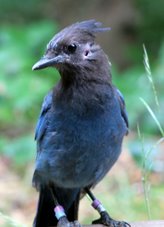
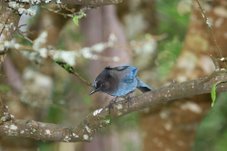
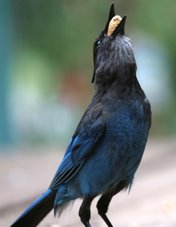
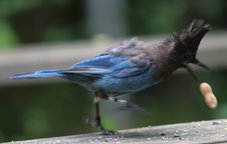
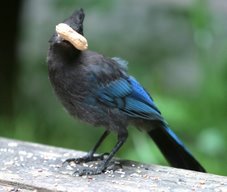
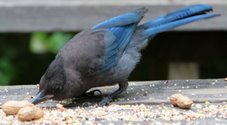
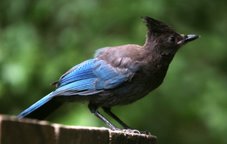
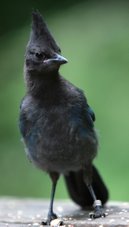

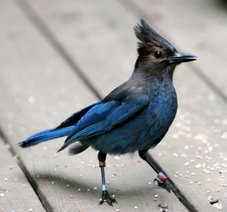
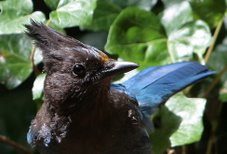
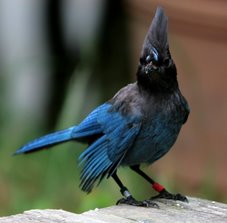
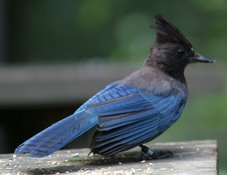
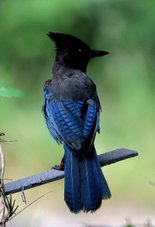
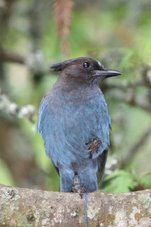
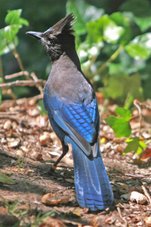
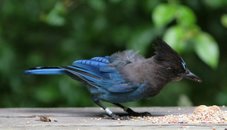
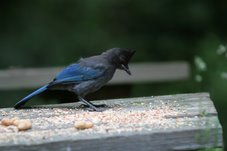
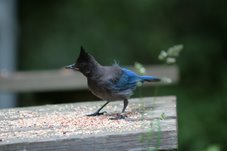
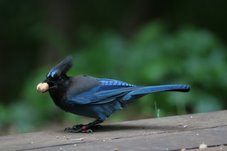
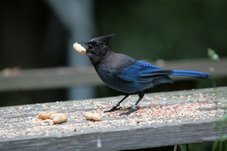
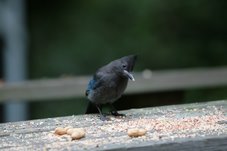
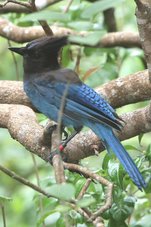
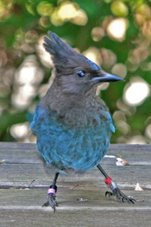
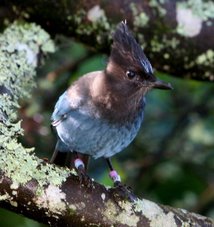
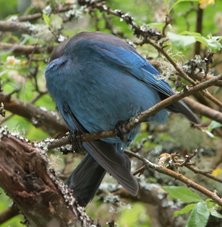
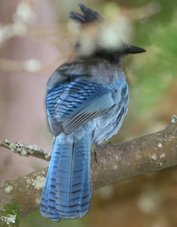
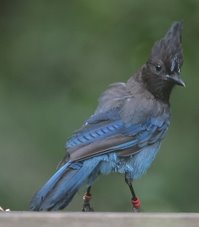
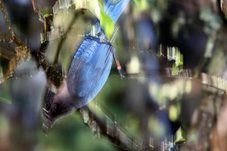
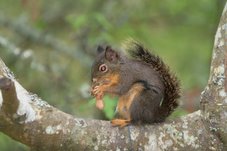
No comments:
Post a Comment